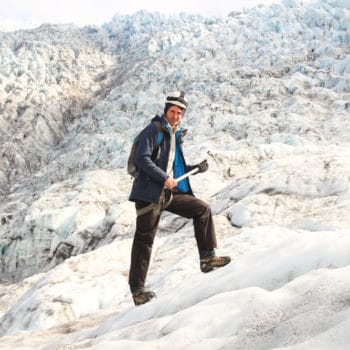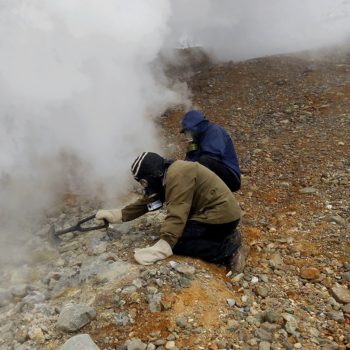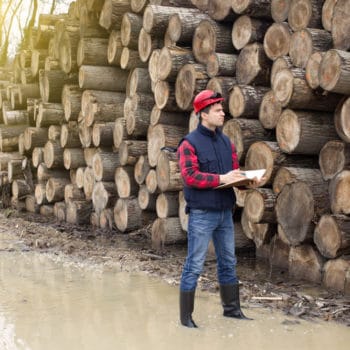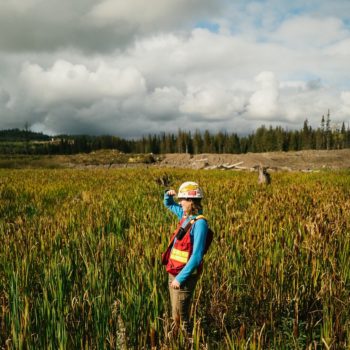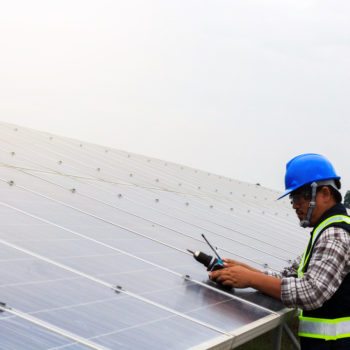Why We Love It
-
$90,210Potential Avg. Salary
-
9.3%Job Growth Rate
-
Growing DemandJob Outlook
-
Green JobsCareer Attribute
Climatologists focus on understanding the typical weather conditions of a geographic area by studying and observing climate changes. Additionally, they may assist architects with planning for structures that withstand certain climates, or assist factories in establishing environmentally friendly practices.
Recommended Schools
What is a Climatologist?
The following job responsibilities are common for individuals in climatologist roles:
- Define climates of specific geographical areas by monitoring weather patterns over a 30-year period of time
- Monitor present-day weather to observe changes in climates
- Educate the public on the types of activities that encourage climate changes
- Assist architects with building plans to help create structures that can withstand specific climates
- Assist factories and other businesses by teaching them environmentally friendly practices for operations and disposal
A Day in the Life
The role of a climatologist is often mistaken for the role of a meteorologist. However, while both careers focus on the weather, meteorologists are focused on predicting day-to-day weather patterns, where climatologists are focused on defining the typical weather for a specific geographic region over a period of time. Weather tells us that is will likely rain tomorrow. Climate tells us that rain is common in a specific geographic region during the spring months.
Climatologists define the climates of geographic areas by analyzing weather patterns over a period of 30 years. They look at what the average high and low temperatures were for each month of those 30 years and collect precipitation amounts and other data. That data can then be averaged to determine that its unlikely to rain in California during summer and fall, or that fall is the season where hurricanes are most likely to develop in the Atlantic Ocean. They can use that understanding to provide guidance on creating safe building structures: areas likely to experience hurricanes should be built to withstand strong winds.
By defining the typical climates of areas, climatologists are able to identify climate changes. For example, modern climatologists believe that global warming is occurring because of observed climate changes over time in different geographic regions. They can then conduct research to determine the causes of climate change and report their findings in order to curb climate change. For example, they may work with factories to teach them how to dispose of waste and create processes that do not damage the ozone layer, or they may encourage government leaders to invest in clean energy sources.
Typical Work Schedule
Most climatologists work full-time during normal business hours. Overtime is uncommon in this career field, but travel may be required on occasion to conduct fieldwork, to consult with businesses, or to present research and findings.
Typical Employers
Climatologists are commonly employed to work for government agencies, such as the National Weather Service. Additionally, they may work in research departments for businesses and universities, or they may perform consulting services as independent contractors or for consulting agencies.
Recommended Schools
How To Become a Climatologist
The first step to beginning a career in climatology is to earn a bachelor’s degree. Popular majors for aspiring climatologists include climatology, meteorology, or atmospheric sciences. After graduation, you’ll want to begin earning professional experience in the field, so many aspiring climatologists find entry-level meteorology work with organizations like the National Weather Service.
However, if you wish to advance into a research climatologist role, you’ll need to earn one or more graduate degrees as well. Most government and research climatologist roles require a minimum of a master’s degree, so you’ll want to continue your education after earning a bachelor’s degree to pursue a master’s degree. Similar to the field of study for your bachelor’s degree, you’ll want to choose a master’s degree program that focuses on climatology or atmospheric sciences.
If you ever want to teach climatology at the college level, you’ll also need to earn a Ph.D. To qualify for tenured climatology professorships at colleges and universities, you’ll need to continue your education after earning a master’s degree to pursue a Ph.D. in climatology or atmospheric sciences. When that education is complete, you’ll be prepared to apply for open climatology professor roles.
Climatologist Salary Data
We’ve provided you the following to learn more about this career. The salary and growth data on this page comes from recently published Bureau of Labor Statistics data while the recommendations and editorial content are based on our research.
National Anual Salary
Low Range
$66,200Average
$90,210High Range
$132,180National Hourly Wage
Low Range
$32/hrAverage
$43/hrHigh Range
$64/hrHow do Climatologist salaries stack up to other jobs across the country? Based on the latest jobs data nationwide, Climatologist's can make an average annual salary of $90,210, or $43 per hour. On the lower end, they can make $66,200 or $32 per hour, perhaps when just starting out or based on the state you live in.
Salary Rankings And Facts
#95 Nationally for All Careers
Above Average Salary Nationally
Programs and Degrees
Here are the most common degrees for becoming a Climatologist. a is usually recommended and specifically a degree or coursework that prepares you for the particular field, see below.
Highest Education Among Climatologists
- 11.1% Doctorate
- 24.7% Masters
- 44.7% Bachelors
- 9.2% Associates
- 10.2% College
- 0% High School
- 0% Less than High School
Job Growth Projections and Forecast
2014 Total Jobs
11,8002024 Est. Jobs
12,900Job Growth Rate
9.3%Est. New Jobs
1,100How does Climatologist job growth stack up to other jobs across the country? By 2024, there will be a change of 1,100 jobs for a total of 12,900 people employed in the career nationwide. This is a 9.3% change in growth over the next ten years, giving the career a growth rate nationwide of Above Average.
Growth Rankings And Facts
#225 Nationally for All Careers
Above Avg. Growth Nationally
What Companies Employ The Most Climatologists
| Industry | Current Jobs | New Jobs Needed | % Increase |
|---|---|---|---|
| Federal government, excluding postal service | 3,100 | -300 | 0% |
| Research and development in the physical, engineering, and life sciences | 2,500 | 100 | 0% |
| Television broadcasting | 700 | --- | 0% |




